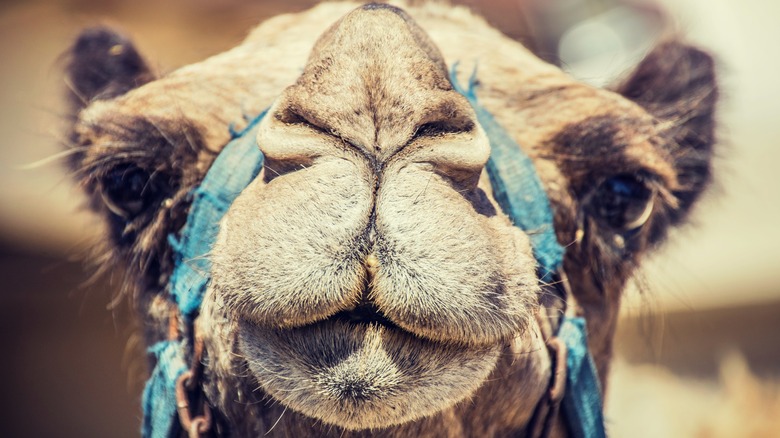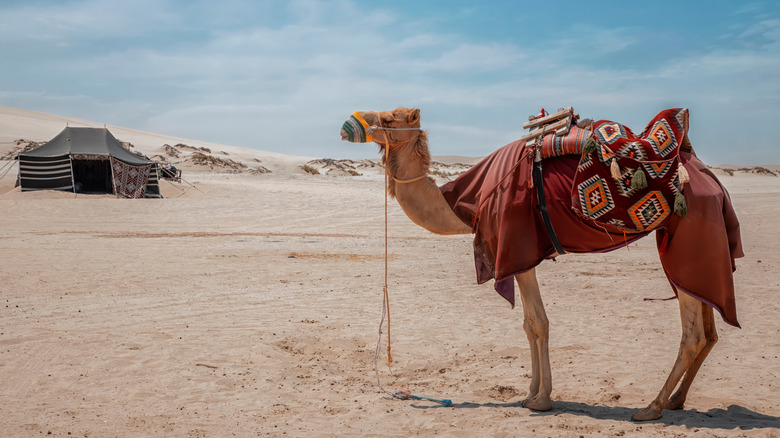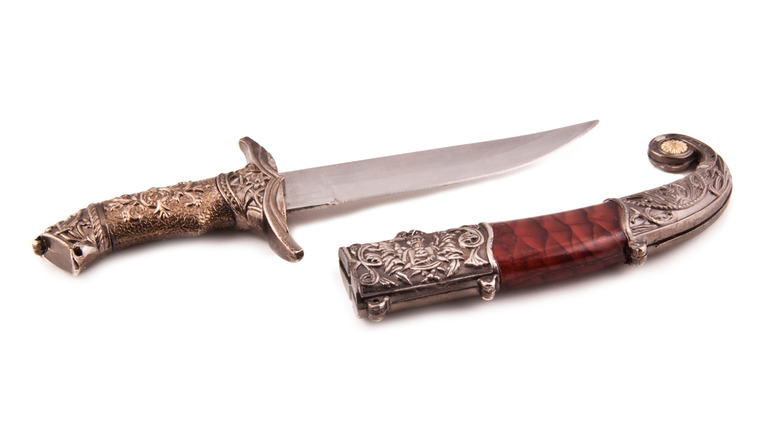How One Camel Caused A Ruthless 40-Year Long War
In the 5th and 6th centuries, just before the arrival of the prophet Muhammad, sporadic violence raged between two Arabian tribes. One was the powerful Taghlib, a mostly Christian tribe in northern Arabia (via Academic Dictionaries and Encyclopedias). It was known for its strength, its poet named Amr ibn Kulthum, and later its reluctance to embrace Islam. The other clan was the Bakr of central Arabia, which had its own poet in Tarafah. The Bakr were in fact cousins of the Taghlib (per Academic Dictionaries and Encyclopedias). The nomadic groups throughout the region, the Bedouin, were often ruled by related princes and chiefs.
The Taghlib tribe was led by Kulayb ibn Rabi'a, the Bakr by Murrah ibn Dhuhl. Around the year 494, being on friendly terms, the groups were camped together. All was well, with relatives reconnecting. Then, according to Arabian literature, a camel got loose and set off a chain of events that sparked a 40-year feud. The tradition has much to say about vengeance and blood ties (via "The Mute Immortals Speak: Pre-Islamic Poetry and the Poetics of Ritual").
The Wandering Camel
A female camel from the Bakr camp, belonging to a woman named al-Basūs, spotted the herd of Taghlib leader Kulayb ibn Rabi'a and wanted to join it (via "The Mute Immortals Speak: Pre-Islamic Poetry and the Poetics of Ritual"). The camel broke free of its tether and went with the herd to the watering hole owned by Kulayb.
Kulayb, being extremely possessive of his territory, angrily took up his bow when he noticed this and shot the intruder. The arrow pierced the udder and killed the beast. Seeing this, Al-Basūs tore off her veil and cried out: "O, for shame! O, protector/neighbor!" This was a sign of disgraced womanhood and a call for retribution. Her kinship rights had been violated; though she was not a blood relative of Kulayb nor Bakr leader Murrah ibn Dhuhl, she was part of the Bakr tribe and deserved more respect than that.
Al-Basūs' young nephew, Jassās, son of Murrah ibn Dhuhl, answered her call. He took his spear and killed Kulayb. Then the war broke out.
Blood and Milk
The Basus War lasted until about 534. According to "The Social Origins of Islam: Mind, Economy, Discourse," the decades were not ones of constant violence but rather animosity that here and there exploded into fierce battles. The war was unique in that it grew beyond the initial social groups and pulled in other allies and branches of the Bakr and Taghlib tribes. Though both tribes survived, Taghlib was especially devastated and only lived on because the enemy allowed it to do so, according to Arabic Fluency.
The war demonstrated not only the perils of feuds but also how blood bonds among the Bedouin would be granted primary importance over those of marriage. Because Al-Basūs was not a blood relative, Kulayb disrespected her. It was Al-Basūs' nephew that avenged her. Further, Kulayb's wife was exiled from the Taghlib because she was in fact the sister of Jassās! In other words, the wife's bond to the Taghlib through marriage was weaker than her blood tie to Jassās and the Bakr, and thus she had to be cast out (via "The Social Origins of Islam"). The mixing of blood and milk when Kulayb's arrow struck the camel's udder has been interpreted as symbolizing blood ties and matrimonial ties, and the mess of their coexistence (via "The Mute Immortals Speak: Pre-Islamic Poetry and the Poetics of Ritual").


